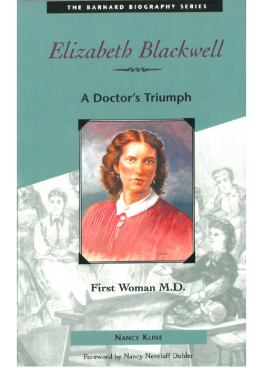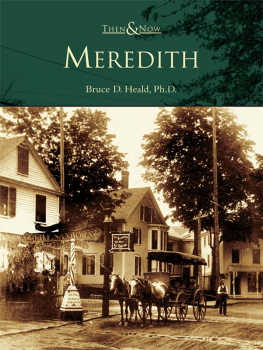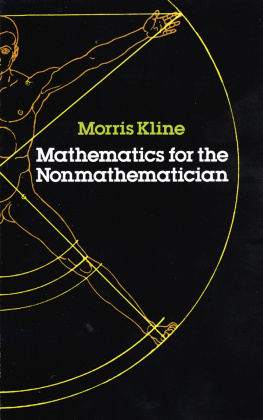All rights reserved. No part of this book may be reproduced or transmitted in any form or by any means, electronic or mechanical, including photocopying, recording, or by any information storage and retrieval system, without permission in writing from the publisher.
Scripture quotations marked (NIV) are taken from the Holy Bible, New International Version, NIV. Copyright 1973, 1978, 1984, 2011 by Biblica, Inc. Used by permission of Zondervan. All rights reserved worldwide. www.zondervan.com. The NIV and New International Version are trademarks registered in the United States Patent and Trademark Office by Biblica, Inc.
Scripture quotations marked RSV are taken from the Revised Standard Version of the Bible, copyright 1946, 1952, 1971 by the Division of Christian Education of the National Council of the Churches of Christ in the USA. Used by permission. All rights reserved.
Due to technical issues, this eBook may not contain all of the images or diagrams in the original print edition of the work. In addition, adapting the print edition to the eBook format may require some other layout and feature changes to be made.
Cover design by Karol Bailey.
Foreword
W hen I learned that Hendrickson Publishers planned on publishing a collection of essays by my former professor Meredith G. Kline, I could not have been happier. Professor Kline has had and continues to have a tremendous influence on many biblical scholars, theologians, and church leaders, but the republication of these seminal studies will spread his work even further with a new generation of readers.
I, of course, read most of these articles when they first appeared, but reading them again reminded me just how much Professor Klines thinking shaped my own approach to the biblical text. At the time I was an MDiv student at Westminster Theological Seminary (19741977), he was traveling down to teach occasional intensive courses from Boston, where he was professor at Gordon-Conwell Theological Seminary. I was privileged to take two such courses from him, but his thinking also reached me and my fellow students through our regular professors, including especially Raymond Dillard.
Professor Kline impressed upon us the importance of studying the Old Testament in its ancient Near Eastern context. Perhaps most significantly, he was among the first to draw out the importance of the connection between biblical covenant, so important particularly to the Reformed church community he was a part of, and ancient Hittite treaties (in the present collection, see in particular The Two Tables of the Covenant). Such study deepened and sharpened our understanding of biblical covenants. It also impressed on many in the next generation of his students how important it is to read the Old Testament, borrowing a phrase from John Walton, in its original cognitive environment.
Perhaps most importantly, Professor Kline impressed upon us the need to explore the interconnections between biblical texts and to use our exegetical imaginations to see the organic unity of Scripture. On occasion he could be criticized for reading too much into a biblical passage or metaphor based on other passages, but he encouraged us to go beyond a kind of arid historical-grammatical exegesis and to take into account the resonances of a biblical text within the canon. In a way, he anticipated the interest in intertextuality and canonical criticism that many of us find so helpful today.
Professor Klines work on the opening two chapters of Genesis has also been of major import for the study of these texts, which has once again grown intense among evangelical Protestants in the aftermath of the sequencing of the human genome. His studies going back to the late 50s (see in this volume Because It Had Not Rained) and beyond (Space and Time in the Genesis Cosmogony) demonstrated to many of us how wrong-minded it was to take these chapters as a straightforward depiction of how God created creation.
Professor Kline wrote during a time when evangelical Old Testament scholarship was at a low. Evangelical scholars were more marginalized than they are now. Fewer evangelicals had doctorates and wrote studies derived from their academic research than at the present. Meredith Kline was a beacon of light in that rather dark period. His work encouraged the students of the next generation, including myself, who were part of a kind of evangelical renaissance in church and academy, to follow in his footsteps. Having been produced predominantly in this period of marginalization, Professor Klines writings deserve a broader reading beyond the Reformed and evangelical audience that will continue to benefit from his work. With great pleasure, I invite you to read these incredibly stimulating and important studies that take us from the creation to the consummation.
Tremper Longman III, PhD
Robert H. Gundry Professor of Biblical Studies, Westmont College
Acknowledgments
Original Publication Information
Oracular Origin of the State was originally published as pp. 13241 in Biblical and Near Eastern Studies: Essaysin Honor of William Sanford LaSor, ed. G. A. Tuttle (Grand Rapids: Eerdmans, 1978). Reprinted by permission of the publisher; all rights reserved.
Death, Leviathan, and the Martyrs: Isaiah 24:127:1 was originally published as pp. 22949 in A Tribute to GleasonArcher, ed. Walter C. Kaiser Jr. and Ronald R. Youngblood (Chicago: Moody Press, 1986). Reprinted by permission of the publisher.
Trial by Ordeal was originally published as pp. 8193 in Through Christs Word: A Festschrift for Dr. Philip E. Hughes, ed. W. Robert Godfrey and Jesse L. Boyd III (Phillipsburg, NJ: P&R, 1985). Used with permission from P&R Publishing Co., P. O. Box 817, Phillipsburg, NJ 08865. www.prpbooks.com.
Space and Time in the Genesis Cosmogony was originally published in Perspectives on Science and theChristian Faith 48.1 (Mar. 1996): 215. Used by permission. http://network.asa3.org/?page=PSCF.
The following articles are used by permission of Wipf and Stock Publishers. www.wipfandstock.com.
The Two Tables of the Covenant. Pp. 11330 in Meredith G. Kline, The Structure of Biblical Authority (Eugene, OR: Wipf & Stock, 1997). Originally published in WTJ 22 (1960): 13346. (The original page numbers for this article, which are set off in double brackets in the present book, are the page numbers from The Structure of Biblical Authority.)
The Old Testament Origins of the Gospel Genre. Pp. 172203 in Meredith G. Kline, The Structure of Biblical Authority (Eugene, OR: Wipf & Stock, 1997). Originally published in WTJ 38 (1975): 127. (The original page numbers for this article, which are set off in double brackets in the present book, are the page numbers from The Structure of Biblical Authority.)
The Rider of the Red Horse. Pp. 130 in Meredith G. Kline, Glory inOur Midst: ABiblical-TheologicalReading of Zechariahs NightVisions (Eugene, OR: Wipf & Stock, 2001). Originally published in two parts in














